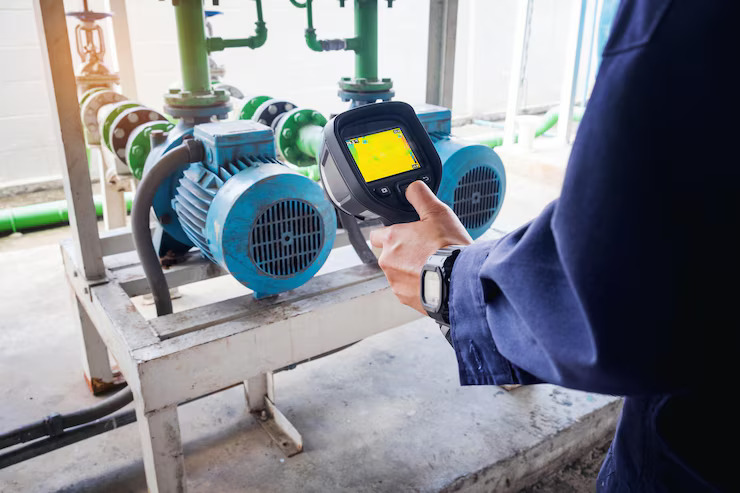Accurate temperature measurement is critical in numerous scientific, industrial, and research applications. One of the key technologies that enable high-precision temperature calibration is the blackbody calibration source. It serves as a reference for calibrating infrared (IR) thermometers, thermal cameras, and radiation thermometers, ensuring they produce accurate and traceable results. This article delves into what a blackbody source is, how it works, its types, applications, and the importance of calibration.
What is a Blackbody Calibration Source?
A blackbody is an idealized physical body that absorbs all incident electromagnetic radiation, regardless of frequency or angle. When it reaches thermal equilibrium, it emits radiation known as blackbody radiation, which is characterized by a specific spectrum and intensity that depends only on its temperature.
In practical terms, a blackbody calibration source is a device that simulates this ideal radiation output. It is designed to emit radiation in a highly predictable manner, making it a standard reference for calibrating instruments that measure infrared radiation.
How Does a Blackbody Source Work?
A blackbody calibration source is typically composed of a cavity with a small aperture. The cavity is coated with a material that has high emissivity (close to 1), ensuring that it behaves almost like a perfect blackbody. The cavity is heated to a precise temperature using electric heaters or other thermal elements, and the emitted radiation through the aperture is then measured.
The key to its accuracy lies in:
- High emissivity coating: Often made of black anodized aluminum or graphite.
- Stable temperature control: Achieved through precision controllers and sensors.
- Uniform thermal distribution: Ensures even radiation emission.
The temperature of the blackbody is continuously monitored and controlled to ensure that it remains within the calibration tolerance. This makes it a reliable reference source for other instruments.
Types of Blackbody Calibration Sources
There are several types of blackbody sources, differentiated mainly by temperature range and portability:
- Low-Temperature Blackbodies:
- Operate between ambient temperature and a few hundred degrees Celsius.
- Used for calibrating IR thermometers and thermal imagers for human body or environmental applications.
- High-Temperature Blackbodies:
- Can reach temperatures of 1000°C or more.
- Suitable for industrial furnace calibration, aerospace, and materials processing industries.
- Portable Blackbody Sources:
- Compact and easy to transport.
- Ideal for field calibration of handheld or fixed IR thermometers.
- Extended Area Blackbodies:
- Have a larger surface area.
- Useful for calibrating wide-angle thermal imaging cameras.
Each type serves specific calibration needs, depending on the application and required temperature range.
Applications of Blackbody Calibration Sources
The use of blackbody sources spans multiple sectors due to the growing need for precise thermal measurement:
- Medical Field:
- Used to calibrate non-contact thermometers and thermal scanners, especially vital during health crises like COVID-19.
- Aerospace and Defense:
- Crucial in calibrating IR sensors used in satellites, missiles, and surveillance systems.
- Industrial Manufacturing:
- Supports process control where heat plays a critical role—such as in metal forging, glass production, or semiconductor manufacturing.
- Research Laboratories:
- Ensures accuracy in experiments involving thermal analysis, radiation, and material properties.
- Environmental Monitoring:
- Employed in calibration of sensors that monitor global temperatures and climate change.
Importance of Calibration Using a Blackbody Source
Temperature measuring devices tend to drift over time due to wear, environmental exposure, or electronic degradation. Regular calibration against a trusted blackbody source ensures:
- Traceability: Calibration standards traceable to national or international standards.
- Accuracy: Ensures measurement devices operate within their specified tolerance.
- Compliance: Meets regulatory requirements for quality and safety.
- Performance Validation: Helps in detecting faulty sensors or degraded instruments.
Failure to calibrate could result in poor decision-making, compromised safety, and non-compliance with standards such as ISO 9001 or FDA regulations.
Choosing the Right Blackbody Calibration Source
When selecting a blackbody calibration source, consider the following factors:
- Temperature Range: Match the device’s operating range with the blackbody.
- Emissivity: Ensure it has near-perfect emissivity for higher accuracy.
- Stability and Uniformity: Look for models with minimal temperature fluctuations.
- Portability: Choose portable models for fieldwork or on-site calibration.
- Control Interface: Digital interfaces and automation options enhance usability.
Brands like Fluke, Omega, and CI Systems are well-known manufacturers of reliable blackbody sources.
Maintenance and Best Practices
To ensure the longevity and performance of blackbody calibration sources:
- Regular Cleaning: Keep the cavity free from dust or contaminants.
- Annual Calibration: Send to accredited labs for routine verification.
- Avoid Physical Damage: Handle with care during transport or use.
- Use in Controlled Environments: Avoid temperature fluctuations and humidity.
Conclusion
Blackbody calibration sources are fundamental to precision temperature measurement. From industrial processes to medical diagnostics, their role in ensuring reliable, accurate, and traceable measurements cannot be overstated. As technologies relying on thermal measurement continue to evolve, so too will the need for dependable blackbody calibration sources.
Whether you are managing a quality lab or ensuring compliance in a manufacturing plant, investing in a high-quality blackbody source—and calibrating regularly—is a smart move toward operational excellence and measurement confidence.


